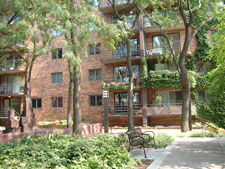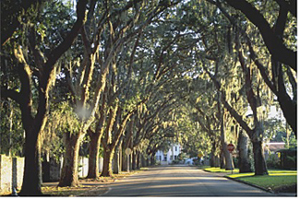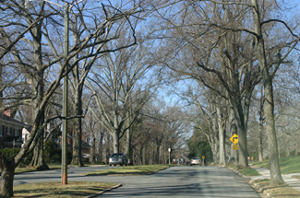Home > Urban/suburban design > Spacing between trees
Spacing between trees
 Trees grow like they do in the forest when planted closely. People prefer spending time in this type space than in a space where canopy is low to the ground. |
 Notice the cathedral-like canopy that developed when these live oaks were planted close together. |
 Spaced further apart, the trees develop a more spreading habit. |
 Trees planted farther apart develop a canopy close to the ground. This requires more frequent pruning than trees planted close together. |
Trees are often spaced apart according to their mature canopy spread. Tree spacings of 50 to 60 feet are common place. This allows the open grown form of the tree to develop (lower photo). There are also nice examples of trees in urban and suburban landscapes spaced much closer (upper photos).
A more natural upright form of the tree usually develops with close spacing (top photo). There are advantages and disadvantages associated with both strategies (see table).
| TREE SPACING IMPACT ON URBAN FORESTRY PROGRAM | |
| CLOSE SPACING (20 TO 30 FEET): | |
Advantages: |
Disadvantages: |
| FARTHER SPACING (40 TO 60 FEET): | |
Advantages:
|
Disadvantages: |

